Related Research Articles

Eugenics is a set of beliefs and practices that aim to improve the genetic quality of a human population by excluding certain genetic groups judged to be inferior, and promoting other genetic groups judged to be superior. The definition of eugenics has been a matter of debate since the term was coined by Francis Galton in 1883. The concept predates the term; Plato suggested applying the principles of selective breeding to humans around 400 BC. Early advocates of eugenics considered it as a way of improving groups of people. In modern usage, the term Eugenics has close ties to scientific racism and white supremacism. Modern bioethicists who advocate new eugenics describe it as a way of enhancing individual traits, regardless of group membership.

Gregor Johann Mendel was a scientist, Augustinian friar and abbot of St. Thomas' Abbey in Brno, Margraviate of Moravia. Mendel was born in a German-speaking family in the Silesian part of the Austrian Empire and gained posthumous recognition as the founder of the modern science of genetics. Though farmers had known for millennia that crossbreeding of animals and plants could favor certain desirable traits, Mendel's pea plant experiments conducted between 1856 and 1863 established many of the rules of heredity, now referred to as the laws of Mendelian inheritance.
Half-life is the time required for a quantity to reduce to half of its initial value. The term is commonly used in nuclear physics to describe how quickly unstable atoms undergo, or how long stable atoms survive, radioactive decay. The term is also used more generally to characterize any type of exponential or non-exponential decay. For example, the medical sciences refer to the biological half-life of drugs and other chemicals in the human body. The converse of half-life is doubling time.

Racism is the belief in the superiority of one race over another. It may also mean prejudice, discrimination, or antagonism directed against other people because they are of a different race or ethnicity. Modern variants of racism are often based in social perceptions of biological differences between peoples. These views can take the form of social actions, practices or beliefs, or political systems in which different races are ranked as inherently superior or inferior to each other, based on presumed shared inheritable traits, abilities, or qualities.
The connection between race and intelligence has been a subject of debate in both popular science and academic research since the inception of IQ testing in the early 20th century. There remains some debate as to whether and to what extent differences in intelligence test scores reflect environmental factors as opposed to genetic ones, as well as to the definitions of what "race" and "intelligence" are, and whether they can be objectively defined. Currently, there is no non-circumstantial evidence that these differences in test scores have a genetic component, although some researchers believe that the existing circumstantial evidence makes it at least plausible that hard evidence for a genetic component will eventually be found.
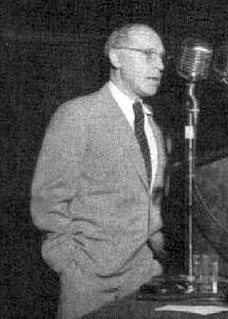
Hermann Joseph Muller was an American geneticist, educator, and Nobel laureate best known for his work on the physiological and genetic effects of radiation (mutagenesis), as well as his outspoken political beliefs. Muller frequently warned of long-term dangers of radioactive fallout from nuclear war and nuclear testing, which resulted in greater public scrutiny of these practices.
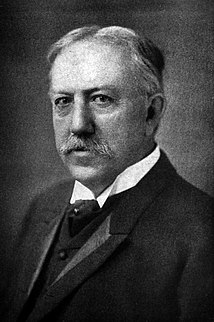
David Starr Jordan was an American ichthyologist, educator, eugenicist, and peace activist. He was president of Indiana University and the founding president of Stanford University.
The concept of race as a rough division of anatomically modern humans has a long and complicated history. The word race itself is modern and was used in the sense of "nation, ethnic group" during the 16th to 19th centuries and acquired its modern meaning in the field of physical anthropology only from the mid-19th century. The politicization of the field under the concept of racism in the 20th century led to a decline in racial studies during the 1930s to 1980s, culminating in a poststructuralist deconstruction of race as a social construct.

Scientific racism is a pseudoscientific belief that empirical evidence exists to support or justify racism, racial inferiority, or racial superiority. Historically, scientific racism received credence throughout the scientific community, but it is no longer considered scientific.
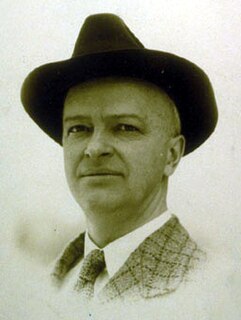
Harry Hamilton Laughlin was an American educator, eugenicist, and sociologist. He served as the Superintendent of the Eugenics Record Office from its inception in 1910 to its closing in 1939, and was among the most active individuals in influencing American eugenics policy, especially compulsory sterilization legislation.
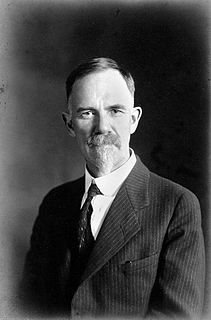
Charles Benedict Davenport was a prominent American biologist and eugenicist. He was one of the leaders of the American eugenics movement.

The Cornell University Press is a division of Cornell University housed in Sage House, the former residence of Henry William Sage. It was first established in 1869, making it the first university publishing enterprise in the United States, but was inactive from 1884 to 1930.

The German Society for Racial Hygiene was a German eugenic organization founded on 22 June 1905 by the physician Alfred Ploetz in Berlin. Its goal was "for society to return to a healthy and blooming, strong and beautiful life" as Ploetz put it. The Nordic race was supposed to regain its "purity" through selective reproduction and sterilization. The society became defunct after World War II.

The International Jew is a four-volume set of antisemitic booklets or pamphlets published and distributed in the early 1920s by Henry Ford, the American industrialist and automobile manufacturer.
Biology is the natural science that studies life and living organisms, including their physical structure, chemical processes, molecular interactions, physiological mechanisms, development and evolution. Despite the complexity of the science, there are certain unifying concepts that consolidate it into a single, coherent field. Biology recognizes the cell as the basic unit of life, genes as the basic unit of heredity, and evolution as the engine that propels the creation and extinction of species. Living organisms are open systems that survive by transforming energy and decreasing their local entropy to maintain a stable and vital condition defined as homeostasis.
Herbert J. Muller (1905–1980) was an American historian, academic, government official and author. He was educated at Cornell University. He taught at Cornell, Purdue and Indiana University (1959-1980), served in the Department of State, the War Production Board, and frequently lectured abroad.
Elof Axel Carlson is distinguished teaching professor emeritus at State University of New York at Stony Brook, as well as an American geneticist and noted historian of Science. Carlson earned his B.A. in 1953 from New York University, and his PhD in 1958 in zoology from Indiana University under the mentorship of Hermann Joseph Muller. Carlson is a past recipient of the E. Harris Harbison Award for excellence in teaching given by the Danforth Foundation.
Sir Adam Roberts is Emeritus Professor of International Relations at Oxford University, a senior research fellow in Oxford University's Department of Politics and International Relations, and an emeritus fellow of Balliol College, Oxford.
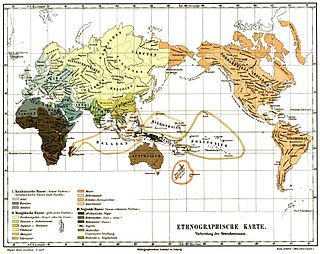
Negroid is a historical grouping of human beings, once purported to be an identifiable race and applied as a political class by another dominant 'non-negroid' culture. The term had been used by forensic and physical anthropologists to refer to individuals and populations that share certain morphological and skeletal traits that are frequent among populations in most of Sub-Saharan Africa and isolated parts of South and Southeast Asia (Negritos). Within Africa, a racial dividing line separating Caucasoid physical types from Negroid physical types was held to have existed, with Negroid groups forming most of the population south of the area which stretched from the southern Sahara desert in the west to the African Great Lakes in the southeast.

Eugenics, the set of beliefs and practices which aims at improving the genetic quality of the human population, played a significant role in the history and culture of the United States during the Progressive Era, from the late 19th century until US involvement in World War II.
References
- ↑ Stern, Alexandra (2005). Eugenic nation: faults and frontiers of better breeding in modern America. University of California Press. p. 233. ISBN 978-0-520-24443-6 . Retrieved 2010-01-21.
- ↑ Carlson, Elof Axel (2001). The unfit: a history of a bad idea. CSHL Press. p. 190. ISBN 978-0-87969-587-3 . Retrieved 2010-01-21.
- ↑ Thurtle, Phillip (2007). The emergence of genetic rationality: space, time, & information in American biological science, 1870-1920. University of Washington Press. p. 251. ISBN 978-0-295-98750-7 . Retrieved 2010-01-21.